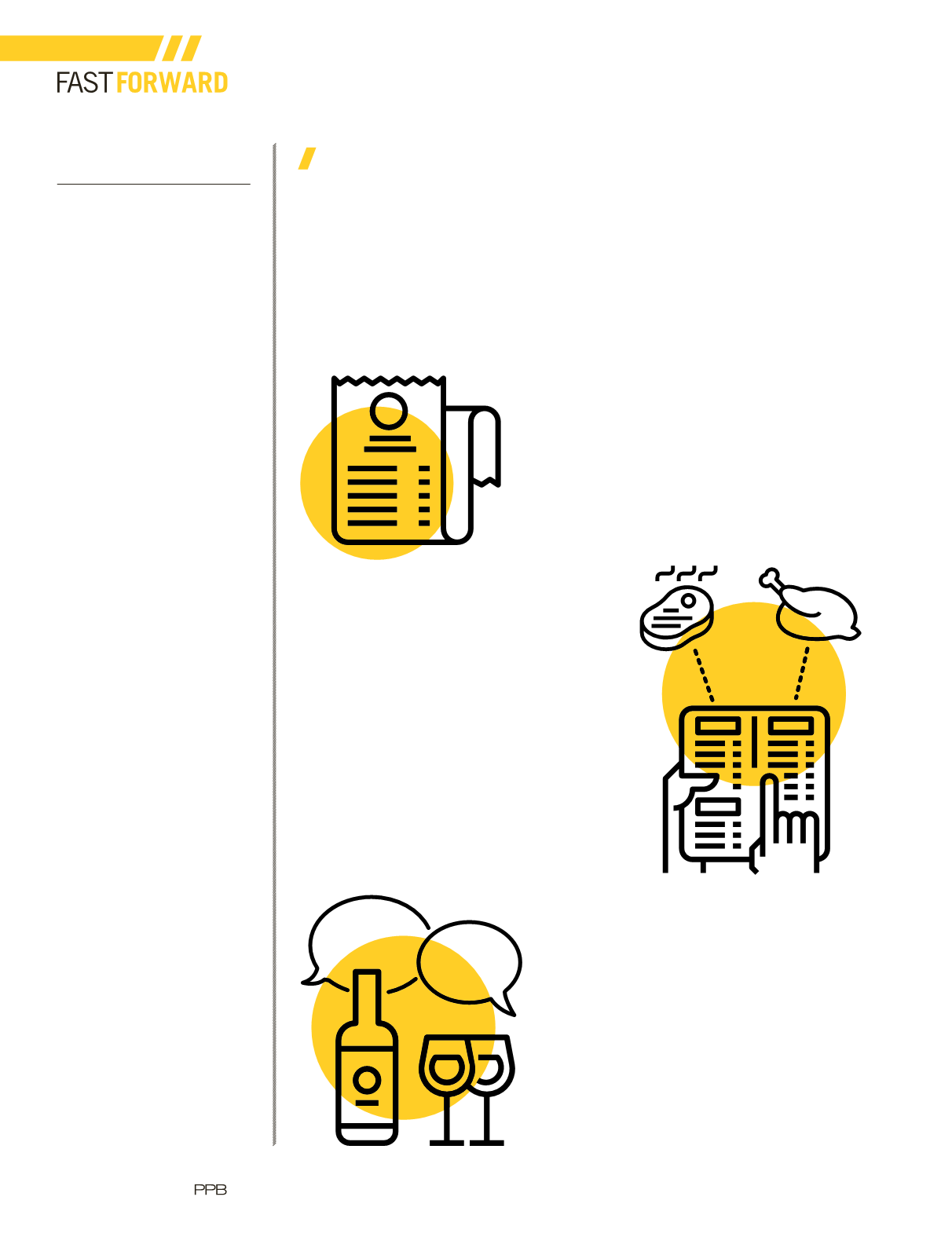

about it—learning from them is
huge both from the knowledge
and relationship development
standpoint. You don’t know what
you don’t know, so step back
and learn, then you can lead.
PPB
What lessons have
you learned about the way
promotional consultants can work
with clients for the best outcome,
and vice versa?
Kollmann
It’s amazing how
helpful it is to work with someone
who asks questions about what
you’re trying to achieve, and listens,
then offers ideas and solutions.
I can go to a distributor and tell
them what product I want from
what vendor, because I have that
background—but I don’t want to
do that, because then I’m limited
to what I used to know, and they’re
only an order taker vs. having the
chance to show their creativity.
You can also be a consultant who
isn’t as ‘creative’ or ‘visionary’, but
listens, is responsive, helpful and
delivers—everyone has the ability to
be that type of person.
We recently went through
a rebranding initiative and have
worked with a few providers in
different areas. There are a couple
who truly made life easier and, at
the risk of upsetting many others
who I know could have done similar
work, I am so grateful to them. So
many say that they want to be an
extension of their client’s marketing
department or to make things
easier for them—and some truly do.
Believe me, when balancing a lot
of other things, if you can do that,
you become a hero and can have a
customer for life.
WATER COOLER
Serve Up A Successful Business Meal
Dining protocols are an exercise in modern etiquette
Sitting down to a business lunch or dinner is a great way to talk shop in an informal, friendly
setting. But in an increasingly global economy, how you navigate the meal can have just as big
an impact on the outcome. Cross-cultural consultant and international protocol expert Sharon
Schweitzer offers these tips for ensuring a successful business dining experience.
1
If you’re sending out the invitations, you are the
host and, therefore, should be footing the bill.
In the U.S., tipping is standard and at least 15 to 20
percent is considered acceptable. The tip should
reflect the total price of the bill. Additionally, be
mindful of guests’ food restrictions or allergies, and
allow them to include any preferences or needs with
the RSVP note.
2
When it’s time to order, be prepared to offer
suggestions to fellow diners. Provide at least two
recommendations—one each at the top and bottom of
the menu’s price range. As the host, you set the pace
of the meal by placing your napkin in your lap to signal
the start of the meal. You also should be the first to
place your loosely folded napkin on the table, to the
left of the plate, at the end of the meal. Some of your
dining companions may be used to ordering alcohol
at business luncheons, while others abstain as a rule.
The host sets precedence; however, just because
you’ve ordered a cocktail doesn’t mean your guests are
obligated to do the same.
3
The host sets the pace for mealtime
conversation as well. Keep the conversation
going, but allow for guests to contribute by asking
questions and expressing genuine interest in fellow
diners’ responses. While the purpose of the meal
is business, it’s acceptable for conversation to
drift into non-work topics. Keep the subjects light,
though—think travel, pets, books—and steer clear
of politics, sex and religion. Don’t interrupt the flow
of conversation to speak to a server, either. Wait for
a break in the conversation to signal politely, or call
softly to the server.
continued from page 68
70
|
NOVEMBER 2016
|
THINK
















